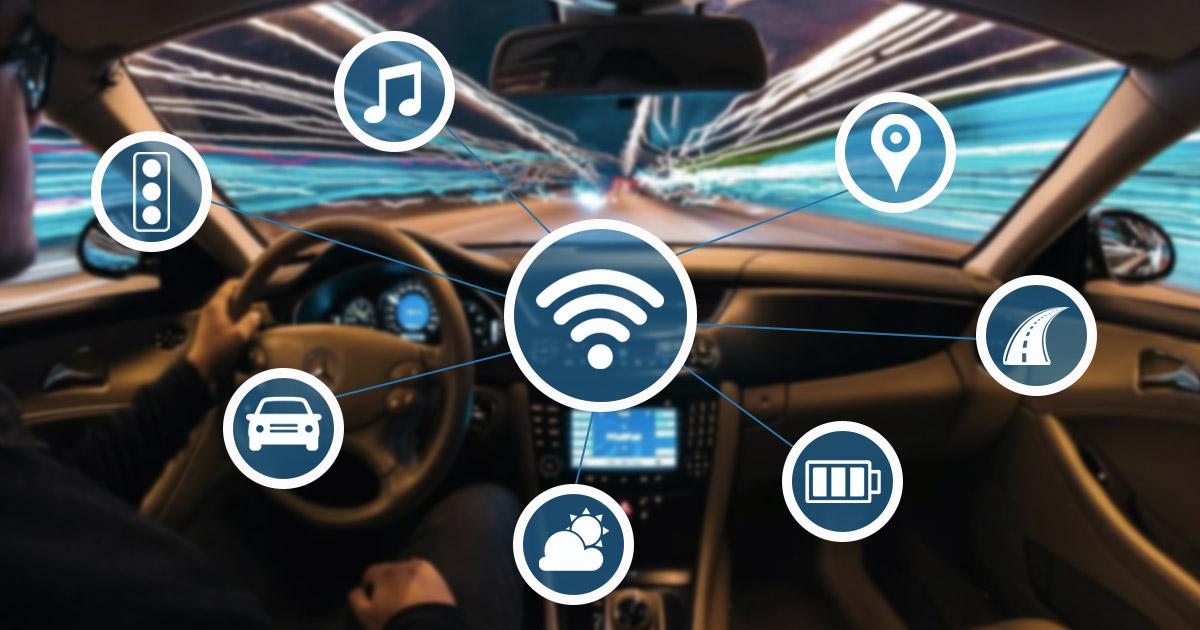How Does Wifi Work In A Vehicle

So, you want to understand how that little Wi-Fi symbol lights up on your car's infotainment screen and connects you to the world while you're cruising down the highway? You've come to the right place. This article will break down the technology behind in-vehicle Wi-Fi, covering the key components, how they interact, and some basic troubleshooting tips. This knowledge is invaluable for understanding your car's overall communication systems and can be beneficial when diagnosing connectivity issues, planning upgrades, or even just satisfying your curiosity.
Understanding In-Vehicle Wi-Fi: A Technical Deep Dive
Purpose
This breakdown isn't just for show. Understanding the inner workings of your car's Wi-Fi system allows you to:
- Diagnose connectivity problems: Is the issue with your car, the carrier, or something else entirely?
- Plan upgrades or modifications: Want to boost your signal or integrate new devices? Knowing the architecture is crucial.
- Ensure proper repairs: Confirm that replacement parts are compatible and installed correctly.
- Satisfy your curiosity: Because understanding complex systems is inherently rewarding.
Key Specs and Main Parts
In-vehicle Wi-Fi systems are essentially miniature mobile hotspots. Here's a look at the key components:
- Cellular Modem: This is the heart of the system. It handles communication with the cellular network (e.g., 4G LTE, 5G). Key specs include the supported cellular bands, data speeds (upload and download), and carrier compatibility. Think of it as the gateway to the internet.
- Wi-Fi Router/Access Point: This component creates a local Wi-Fi network within the vehicle. It broadcasts a wireless signal that your devices (phones, tablets, laptops) can connect to. Important specs here include the Wi-Fi standard supported (e.g., 802.11 a/b/g/n/ac/ax – Wi-Fi 6), the number of supported devices, and the security protocols used (e.g., WPA2, WPA3).
- Antenna(s): These are crucial for both cellular and Wi-Fi communication. Cellular antennas need to be highly effective at receiving and transmitting signals from cell towers, even in areas with weak coverage. Wi-Fi antennas ensure a strong and stable local network within the vehicle. Multiple antennas may be used for diversity, which improves signal quality in varying conditions.
- SIM Card: This stores your mobile network subscription information. It's what identifies your car's connection to the cellular carrier.
- Telematics Control Unit (TCU) or Head Unit Integration: The Wi-Fi system is often integrated into either the TCU, which handles various telematics functions like emergency calls and remote diagnostics, or directly into the head unit (infotainment system). This integration allows for control and management of the Wi-Fi hotspot through the car's interface.
- Power Supply: The system draws power from the car's electrical system, typically through the 12V DC outlet or directly from the vehicle's wiring harness.
How It Works
Here's a step-by-step breakdown of how data flows in an in-vehicle Wi-Fi system:
- Power Up: When you start the vehicle (or enable the Wi-Fi hotspot), the system powers on.
- Cellular Connection: The cellular modem connects to the cellular network using the antenna and SIM card. It establishes a data connection with the carrier.
- Data Reception: The modem receives data from the internet via the cellular network.
- Wi-Fi Routing: The modem passes this data to the Wi-Fi router/access point.
- Local Network Creation: The router creates a local Wi-Fi network within the vehicle, broadcasting a SSID (Service Set Identifier, the network name).
- Device Connection: Your devices (phones, tablets) connect to the Wi-Fi network using the password (if one is set).
- Data Transmission: Data from your devices is transmitted to the Wi-Fi router, then to the cellular modem, and finally to the internet. Data from the internet follows the reverse path.
Real-World Use – Basic Troubleshooting Tips
Having trouble with your car's Wi-Fi? Here are a few things to check:
- Check the data plan: Make sure your data plan is active and has sufficient data remaining.
- Signal strength: Is the car in an area with good cellular coverage? Weak signal can cause intermittent connectivity.
- Number of connected devices: Some systems have a limit on the number of devices that can connect simultaneously. Try disconnecting some devices to see if that improves performance.
- Restart the system: Turn the Wi-Fi hotspot off and back on, or restart the vehicle.
- Software updates: Check for software updates for your car's infotainment system or TCU. Updates often include bug fixes and performance improvements.
- SIM card: Ensure the SIM card is properly inserted. Sometimes reseating the SIM card can resolve connectivity issues.
- Check the antenna connection: (Advanced) If you're comfortable working with car electronics, inspect the antenna connections for damage or looseness. Be extremely careful when working with any car electronics, disconnecting the battery is always recommended.
If these basic steps don't work, consult your car's owner's manual or contact the manufacturer's customer support.
Safety – Highlight Risky Components
Working with your car's electronics requires caution:
- Electrical System: The car's electrical system can be dangerous. Always disconnect the negative terminal of the battery before working on any electrical components.
- Antennas: While generally low power, avoid prolonged close proximity to the antennas while they are transmitting, especially cellular antennas.
- TCU and Head Unit: These are complex electronic components. Avoid disassembling them unless you have the necessary expertise and equipment. Incorrect handling can damage them.
- SIM Card Ejector Tool: Only use the proper tool or paperclip to eject the SIM card. Using a sharp object can damage the SIM card slot.
Disclaimer: Modifying your car's electronics can void your warranty. Always consult with a qualified technician before making any modifications.
We have a detailed schematic diagram of a typical in-vehicle Wi-Fi system architecture, illustrating the connections between the components discussed. This diagram provides a visual representation of the data flow and can be incredibly helpful for troubleshooting or planning modifications. You can download it by clicking on the link below.
[Link to Downloadable Diagram Here]
